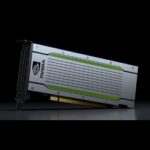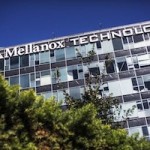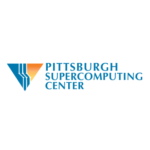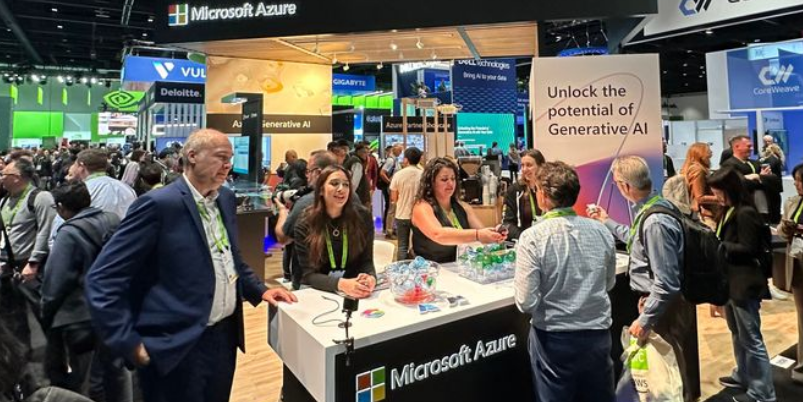Today NVIDIA and VMware announced plans to deliver accelerated GPU services for VMware Cloud on AWS to power modern enterprise applications, including AI, machine learning and data analytics workflows. These services will enable customers to seamlessly migrate VMware vSphere-based applications and containers to the cloud, unchanged, where they can be modernized to take advantage of high-performance computing, machine learning, data analytics and video processing applications.
Mellanox Powers Virtualized Machine Learning with VMware and NVIDIA
Today Mellanox announced that its RDMA (Remote Direct Memory Access) networking solutions for VMware vSphere enable virtualized Machine Learning solutions that achieve higher GPU utilization and efficiency. “As Moore’s Law has slowed, traditional CPU and networking technologies are no longer sufficient to support the emerging machine learning workloads,” said Kevin Deierling, vice president marketing, Mellanox Technologies. “Using hardware compute accelerators such as NVIDIA T4 GPUs and Mellanox’s RDMA networking solutions has proven to boost application performance in virtualized deployments.”
Supermicro Launches New High-Performance vSAN Solution
Today Supermicro extended its vSAN system portfolio and introduced a new enterprise-class vSAN solution — Ultra SuperServer — to its broad portfolio of fully configured, ready to deploy server systems. Supermicro solutions, coupled with industry-proven vSAN, provides turn-key solutions for the hyper-converged infrastructure marketplace. “The Supermicro 2U/1U Ultra SuperServers are configurable with support of 20, 10, 4, or 2 hot-swappable NVMe drives and leverage 2nd Gen Intel Xeon Scalable processors and Intel Optane DC SSDs. The BigTwin, a high-density multi-node (2U-4 node) system, is optimized for mission-critical applications supporting up to 6TB memory per node and configured for hyper-converged infrastructure. Both systems are ideal for specific workloads offering operational simplicity, scalability, low total cost of ownership (TCO), and resource-savings for intelligent enterprise deployments.”
Singularity 3.3.0 Goes GA
Today Sylabs announced the Generally Available Release of Singularity 3.3.0. As the premier Container platform for performance-sensitive workloads, this release of Singularity focused on quality and stability. “Given the frenetic pace of development, we saw this as an opportunity to double down on quality and stability. Three release candidates later, you can appreciate that the quality and stability objective has been achieved in spades. Kudos to the entire user, developer, and provider community for their collective and substantial efforts in reaching this milestone.”
Job of the Week: Virtualization Infrastructure Engineer at PSC
The Pittsburgh Supercomputing Center is seeking a Virtualization Infrastructure Engineer in our Job of the Week. “In this role, you will primarily be responsible for developing and maintaining the infrastructure to deploy and maintain fleets of hosts (physical and virtual), containers and services for the variety of project-based resources PSC operates and have a hand in planning new directions.”
Decoupling EDA Toolchains from the OS with Singularity Containers
Singularity containers introduce a compelling means for unlocking the implied dependency between application toolchains and operating system. By encapsulating everything but the kernel in a single file, Singularity containers decouple the runtime and allow it to be highly portable in a trusted way.
Video: NAG Launches HPC Cost of Ownership Calculator
In this video, Mike Croucher from NAG demonstrates the company’s new Total Cost of Ownership Calculator for HPC. “Should your next HPC procurement be on-premise or in the cloud? This is one of the questions that our clients ask us to help with and part of the answer involves Total Cost of Ownership of the resulting facility. This calculator is provided as a working example of a TCO model.”
SingularityPRO comes to Google Cloud
Today Sylabs announced a multi-phase collaboration with Google Cloud as a technology partner. Aimed at systematically addressing enterprise requirements in a cloud-native fashion, the first phase of the collaboration will be based upon availability of Sylabs’ SingularityPRO via the Google Cloud Platform Marketplace. “Singularity is a widely adopted container runtime that implements a unique security model to mitigate privilege escalation risks, and provides a platform to capture a complete application environment into a single file.”
Accelerating Machine Learning on VMware vSphere with NVIDIA GPUs
Mohan Potheri from VMware gave this talk at Stanford HPC Conference. “This session introduces machine learning on vSphere to the attendee and explains when and why GPUs are important for them. Basic machine learning with Apache Spark is demonstrated. GPUs can be effectively shared in vSphere environments and the various methods of sharing are addressed here.”
Singularity: Container Workflows for Compute
Greg Kurtzer from Sylabs gave this talk at the Stanford HPC Conference. “Singularity is a widely adopted container technology specifically designed for compute-based workflows making application and environment reproducibility, portability and security a reality for HPC and AI researchers and resources. Here we will describe a high-level overview of Singularity and demonstrate how to integrate Singularity containers into existing application and resource workflows as well as describe some new trending models that we have been seeing.”









